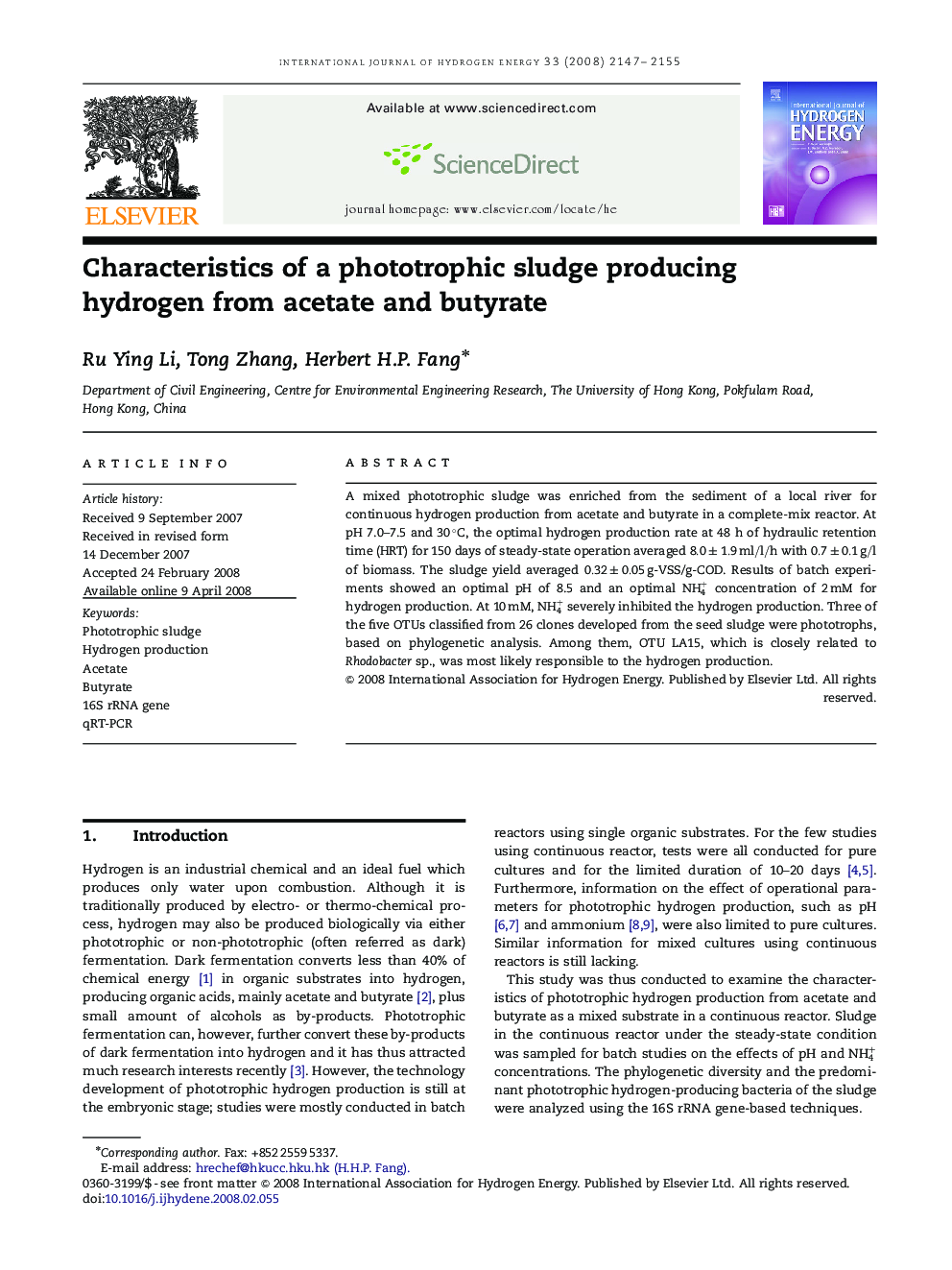| Article ID | Journal | Published Year | Pages | File Type |
|---|---|---|---|---|
| 1281622 | International Journal of Hydrogen Energy | 2008 | 9 Pages |
Abstract
A mixed phototrophic sludge was enriched from the sediment of a local river for continuous hydrogen production from acetate and butyrate in a complete-mix reactor. At pH 7.0-7.5 and 30âC, the optimal hydrogen production rate at 48 h of hydraulic retention time (HRT) for 150 days of steady-state operation averaged 8.0±1.9ml/l/h with 0.7±0.1g/l of biomass. The sludge yield averaged 0.32±0.05g-VSS/g-COD. Results of batch experiments showed an optimal pH of 8.5 and an optimal NH4+ concentration of 2 mM for hydrogen production. At 10 mM, NH4+ severely inhibited the hydrogen production. Three of the five OTUs classified from 26 clones developed from the seed sludge were phototrophs, based on phylogenetic analysis. Among them, OTU LA15, which is closely related to Rhodobacter sp., was most likely responsible to the hydrogen production.
Related Topics
Physical Sciences and Engineering
Chemistry
Electrochemistry
Authors
Ru Ying Li, Tong Zhang, Herbert H.P. Fang,
